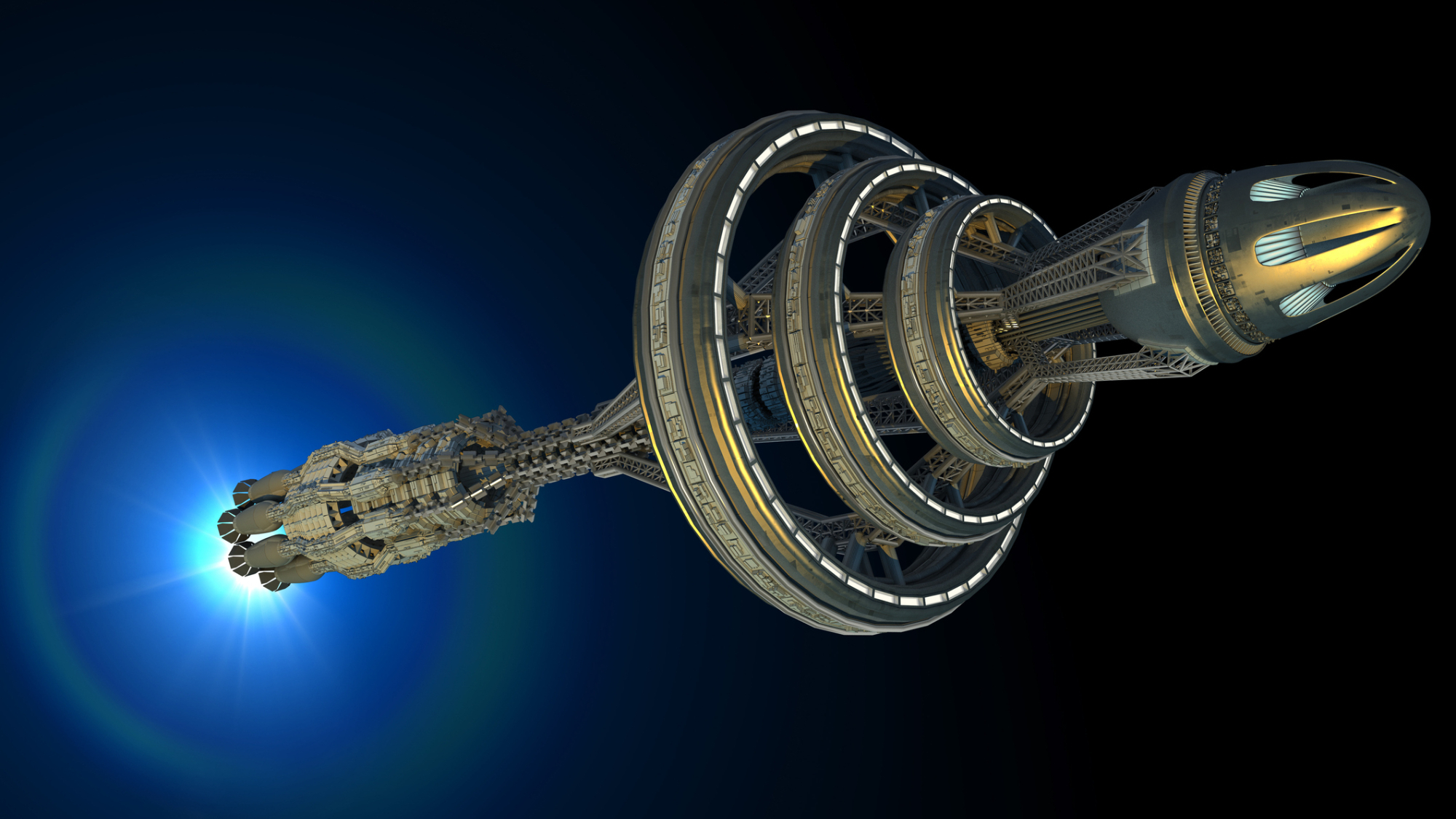Design an interstellar 'generation ship' to spend decades among the stars with Project Hyperion competition
A new design competition, dubbed Project Hyperion, is calling for submissions for the design of a crewed interstellar generation ship.

Human technology has allowed us to extend the scope of our curiosity beyond the confines of our home world and into the solar system. But it's not hard to imagine that one day humans will want to venture further, perhaps towards a star in our galactic vicinity that might host a rocky, watery world not unlike Earth.
Getting there, however, is complicated. Even if human technology reaches a point in the near future where we could create a propulsion system that could get a spaceship within 10% the speed of light (which is orders of magnitude faster than what is currently possible), a journey to a nearby star hosting a potentially habitable world could take decades or hundreds of years at best. Given these limitations, a number of scientists and science fiction authors have pondered the feasibility of something called a "generation ship." A generation ship is a hypothetical spacecraft capable of sustaining human inhabitants for multiple generations as they make the vast journey to a nearby star system.
A new design competition, dubbed Project Hyperion, is calling for submissions for the design of a crewed interstellar generation ship. The project is part of study that is aiming to provide an assessment of the feasibility of crewed interstellar flight using current and near-future technologies, and hopes to inform future research and technology development as well as informing the public about logistics and potential of interstellar travel.
Rather than focusing on the design of the propulsion system, or structural design of the ship, researchers are specifically interested in answering what an ideal space habitat architecture and social system would look like for such a journey.
For the competition, a team of at least one architectural designer, one engineer, and one social scientist is tasked with designing the habitat of a generation ship, including its architecture, and system of societal organization.
The constraints applications must adhere to are as follows:
- The duration for the hypothetical mission is 250 Earth years from launch to arrival at the destination.
- The target destination is a rocky planet with an artificial ecosystem created by a precursor probe.
- The generation ship/habitat generates Earth equivalent gravity via rotation.
- The habitat will provide atmospheric conditions similar to Earth.
- The habitat shall protect its inhabitants from radiation and possible impacts.
- The ship should be able to accommodate 1000 +-500 people over the entire trip duration.
What are some factors that designers should be mindful of? While no human has spent such long periods of time in space, science fiction authors have been exploring what types of challenges such a project could face, in addition, human beings have been living and working in space for some time. What have we learned?
Breaking space news, the latest updates on rocket launches, skywatching events and more!
- Privacy: How will the design of the ship ensure inhabitants can achieve privacy given they are going to be confined to a ship with hundreds of people?
- Mental health: How will the design of the habit mimic Earth's natural environment?
- Conflict resolution: How will the design of the habitat minimize potential conflict, and how will the social system deal with possible unethical behavior?
- Intimacy: How will the design of the ship allow for intimacy between inhabitants?
- Social Hierarchy: How will social roles be allocated/enforced?
- Connection to Earth: How will inhabitants maintain their connection to Earth?
Designs will be evaluated on their architectural considerations, such as how the living space will function for its inhabitants, as well as its aesthetic properties. They will also be evaluated on the technical details, such as how the essential physical needs of the inhabitants are met (e.g. food, water, waste recycling). And lastly they will be evaluated on their social planning, such as what cultural value system will the society adopt, and how this system will mitigate against issues the society is likely to come up against.
For more information about the specific requirements of the competition, and the competition's timeline, you can find them at ProjectHyperion.org.

Conor Feehly is a New Zealand-based science writer. He has earned a master's in science communication from the University of Otago, Dunedin. His writing has appeared in Cosmos Magazine, Discover Magazine and ScienceAlert. His writing largely covers topics relating to neuroscience and psychology, although he also enjoys writing about a number of scientific subjects ranging from astrophysics to archaeology.
